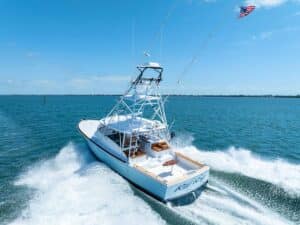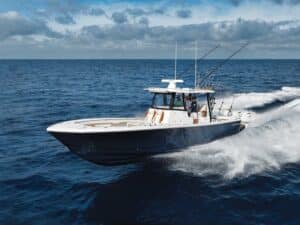
If you ask any captain the top three things that give them anxiety on a boat, I can guarantee getting a high pressure code on the air-conditioning display is right there at the top of the list. As boats have gotten larger, the cooling and refrigeration demands have also increased exponentially. What used to be a single pump to circulate the air-conditioning and refrigeration systems is now a chiller system or multiple larger pumps.
Marine organisms that grow inside a boat’s raw-water circulation lines need oxygen and nutrients to survive. By increasing the flow of water through this system, we are simply feeding them everything they need to grow at a faster rate. So, what used to be a small part of a boat’s general maintenance program has now become a major problem for some crews, especially when the boat sits for extended periods of time or travels to warm-water locations.
Traditional Treatment Methods
Until recently, the maintenance involved was more reactionary than preventative. As the marine growth accumulates in the hoses and coils, the system will shut down on high pressure because of the decreasing raw-water flow. Marine air conditioners need a certain amount of flow to function properly, and if left untreated, much like a human circulatory system, the blockage becomes too great and the system shuts itself down.
When this happens, it is necessary to descale the boat’s raw-water system by flushing the system, usually with muriatic acid. Some crews opt do it themselves, so several companies have developed systems that help simplify the process by using buckets with pumps and fittings or by installing specialized tanks in the boats to make the process of flushing the raw-water system easier.
To keep the growth at a minimum, some captains use chlorine or bromine tablets in their raw-water strainers, but this can be harmful to the boat’s plumbing, and is usually a never-ending task. Sometimes within days the tabs have disintegrated and need to be replaced, or the strainer baskets need to be cleaned again. If you put too much chlorine in the baskets, flush too often or with too much product, the harsh chemicals can eat through the fittings and develop leaks. Marine plumbing fittings are tough, but not bulletproof. So, just like our own health, being a little more preventative is a better long-term plan.
Descaling Problems
Without pulling manifolds and fittings apart, or having a camera to look inside the cooling lines, there’s no way to see exactly how much growth has accumulated. The process of descaling is just that: getting rid of the growth that’s already there. So when it breaks loose, it has to go somewhere—hopefully making it all the way to the bucket or tank and not getting stuck somewhere in the cooling system, possibly causing more problems. So what about preventing the growth instead of dealing with it after it’s there?
There are a few options to treat a cooling system and prevent growth instead of chasing it. Some builders are using a closed-loop cooling system that has coolant running through it with a raw-water heat exchanger, so only part of the system needs cleaning and descaling.

Another option is the ElectroSea ClearLine system. It uses electricity and salt water to make and circulate low levels of chlorine, keeping the raw-water system virtually growth-free. With a ClearLine control panel and a ClearCell electrochlorinator plumbed into the raw-water circuit, the ElectroSea system generates just enough chlorine to prevent growth but not enough to damage the system.
Because of the half-life of chlorine, there are only trace amounts—approximately the same level as drinking water—by the time it leaves the system. What seems to make the ElectroSea system unique is the ability to constantly adjust the chlorine output based on flow rate, and the ability to fine-tune the system according to the boat’s needs.
With this information, I was eager to find some folks who are using the ElectroSea system. In Jupiter, Florida, there are a handful of boats in the same marina that have it installed.
Summers in South Florida can wreak havoc on marine refrigeration and air-conditioning systems, and it is challenging to keep the growth at bay. With the water temperatures reaching the 90-degree mark in some marinas, I figured it’s a good testing ground. After speaking with three professional captains, the general consensus seems to be that while it might take a little bit of time to get the ElectroSea system dialed in, once it’s up and running they have had nearly zero growth after several months. Another benefit is that the system can be retrofitted to older vessels, as well as installed on new builds. So, if ElectroSea is easy to use, prevents growth from forming in the raw-water system, and is also environmentally friendly, it seems that it could be a good way to be proactive instead of reactive in the never-ending battle to keep these systems clean and operating at maximum efficiency.







